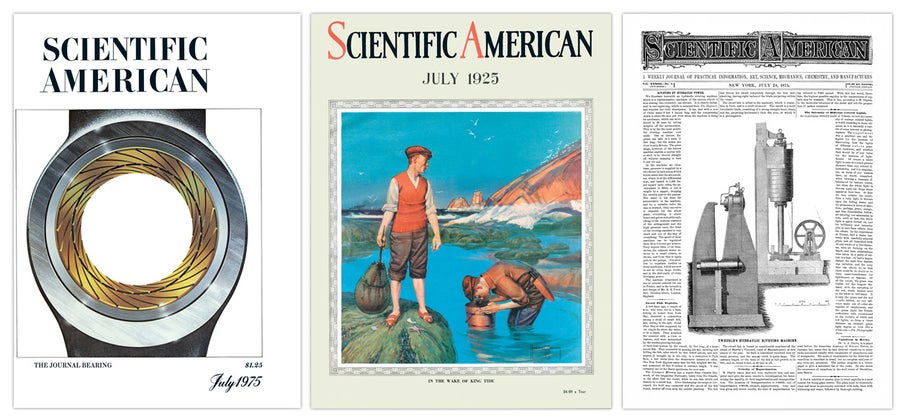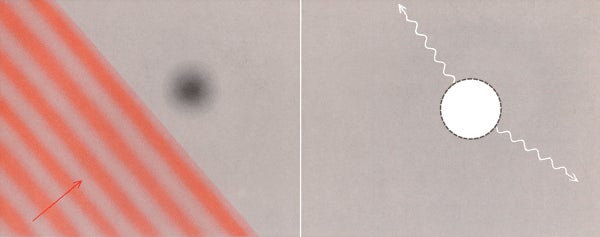1975
Kennedy Protects Science Funding
“When a scientist seeks public financing for research, the request is judged by the review panels for the National Institutes of Health, the National Science Foundation and other Federal granting agencies. The 94th Congress has given numerous signs that it might like to make such judgments itself. The House of Representatives, in passing a bill authorizing $755.4 million for the NSF for fiscal year 1976, adopted an amendment that would give Congress veto power over any grant. The Senate adopted an authorization bill that did not include an amendment. Senator Edward M. Kennedy, Democrat of Massachusetts, chairman of the subcommittee that prepared the bill, said the Committee on Labor and Public Welfare unanimously regarded the amendment as ‘not only unworkable but contrary to the principles which have brought this nation to its leadership position in scientific research.’”
On supporting science journalism
If you're enjoying this article, consider supporting our award-winning journalism by subscribing. By purchasing a subscription you are helping to ensure the future of impactful stories about the discoveries and ideas shaping our world today.
Accurate Missiles
“Secretary of Defense James R. Schlesinger announced the intention of the U.S. to develop a new generation of long-range ballistic missiles capable of delivering nuclear warheads against distant targets with unprecedented accuracy. An ‘active’ guidance system that could supplement a missile’s basic inertial guidance system by generating corrections in the trajectory of the warhead as it reenters the atmosphere is under development and should be capable of achieving near-perfect accuracy.”
1925
Nothing Magnetic in This Ship
“The Carnegie, a scientific research vessel constructed entirely of wood and other nonmagnetic materials, has been making a magnetic survey of the ocean. The timbers in her hull are fastened with bronze spikes and bolts, the rigging is hemp instead of steel, the cookstoves are built of brass and copper, the anchors are bronze, each weighing 1,900 pounds, and the anchor chains are not chains at all but are manila rope hawsers 11 inches in circumference. Because of this method of construction, no corrections on account of the presence of iron or other magnetic material need be applied to the results obtained with the various magnetic instruments onboard. The yacht is charged with the study of the Earth’s magnetism and with seeking out the cause of variations in its magnetic and electric fields.”
1875
Oil Wells Waste Gas
“There is little doubt that the gas escaping constantly from oil wells is of nearly or quite as much value as the oil itself. It is a wonder that means have not long since been adopted to utilize this immense product of the Earth. For years the gas has been allowed to pass away into the air uselessly. One well in the Butler oil region of Pennsylvania flows with a pressure of 300 pounds to the square inch and is estimated to yield a million cubic feet of gas every 24 hours.”
A Toxic Mouthful for Cigar Smokers
“The products of smoking tobacco in cigars are quite numerous and complex. Distinct products in the smoke include cyanhydric acid; sulphuretted hydrogen; the fatty acids formic, acetic, propionic, butyric and valerianic; carbolic acid; creosote; pyridine, picolin, collidin and other similar alkaloids. Also found are ammonia, nitrogen, oxygen and small quantities of marsh gas and carbonic oxide.”
Swordfish Duel
“A few days ago a couple of men in a boat fishing in Lower New York Bay found what they supposed, by its single fin above the water, to be a shark. They attacked the monster, and were astonished by the sudden piercing through of their boat bottom by the sword, 4.5 feet long, of a large swordfish. They succeeded in noosing its tail and killing the fish, after which it was brought to a restaurant a few doors from the Scientific American office. The New York Express states that the fish weighed 390 lbs., and measured 19 feet 8 inches. It was certainly one of the finest specimens we ever saw. The swordfish is allied to the mackerel, which it resembles in form, and is a swift swimmer. The sword consists of a strong straight bone, sharp and flat. The ordinary length of a fish body at full growth is 14 feet, and its sword 6 feet, or 20 feet in all.”

